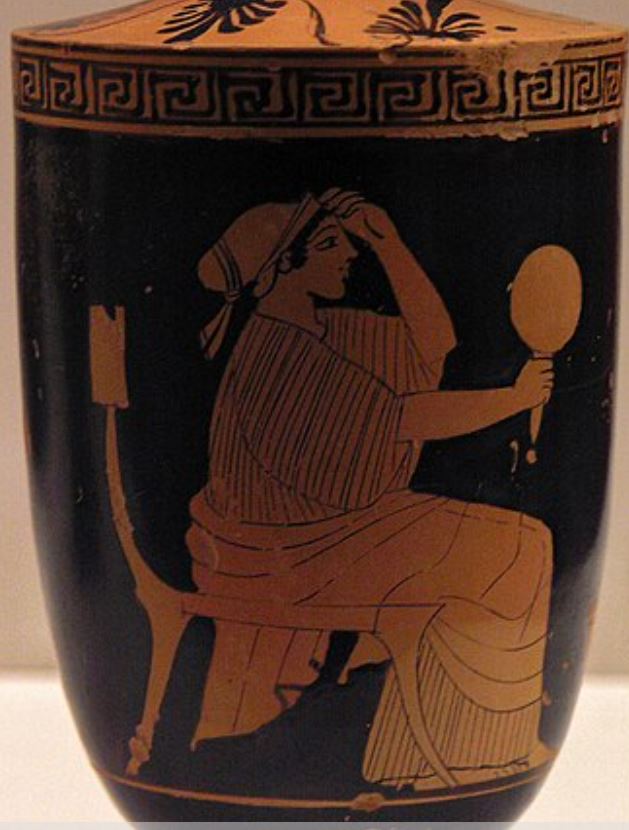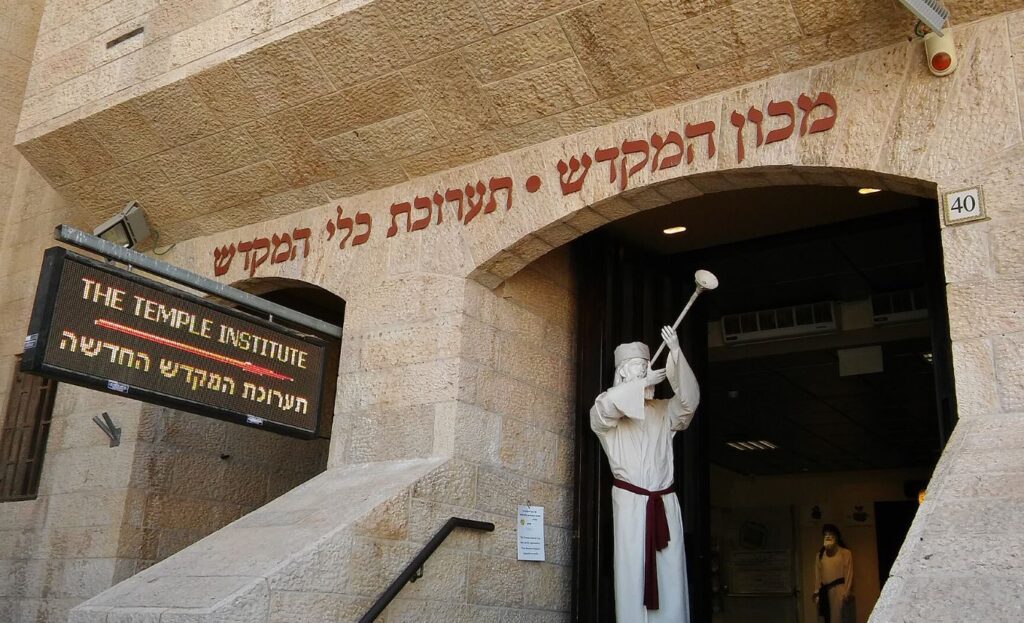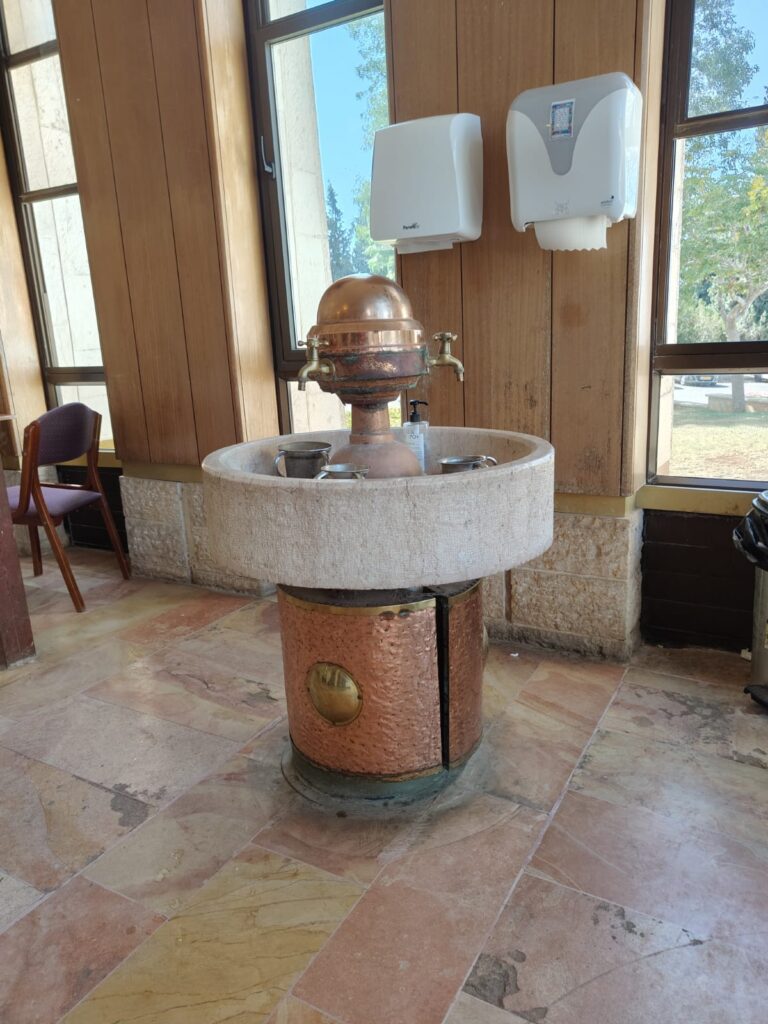After an interesting discussion of the Twister-like acrobats that the priests have to perform to wash their hands and feet (Zevachim 19b) the Gemara gets into the details of where they do this washing – the kiyor כיור or washbasin:
“Ben Katin made twelve spigots for the basin. He also made a mechanism [mukhani] for the basin so that its water would not be disqualified by being left overnight.” (Zevachim 20a)
In order to perform their duties in the Temple, the priests must be purified. They have to go to the mikvah but in addition they have to sanctify their hands and feet. That is done with water in the Temple courtyard, hence the need for a basin. In the description of the Mishkan the basin is mentioned, but unlike the other vessels, no dimensions or shape are given for it, only its material, copper, is specified:
“Make a laver of copper and a stand of copper for it, for washing; and place it between the Tent of Meeting and the altar. Put water in it, and let Aaron and his sons wash their hands and feet from it” (Shmot 30: 18-19)
At the end of the book of Shmot, we have a tallying of the contributions given for the Mishkan. The material to make the basin is singled out in a fascinating and cryptic description:
וַיַּ֗עַשׂ אֵ֚ת הַכִּיּ֣וֹר נְחֹ֔שֶׁת וְאֵ֖ת כַּנּ֣וֹ נְחֹ֑שֶׁת בְּמַרְאֹת֙ הַצֹּ֣בְאֹ֔ת אֲשֶׁ֣ר צָֽבְא֔וּ פֶּ֖תַח אֹ֥הֶל מוֹעֵֽד׃
“He made the laver of copper and its stand of copper, from the mirrors of the women who performed tasks at the entrance of the Tent of Meeting.” (Shmot 38:8)
What are the מַרְאֹת֙ הַצֹּ֣בְאֹ֔ת? It could mean the mirrors of the women who assembled or as the JPS translates here, performed tasks. But Rashi brings a powerful midrash to explain the phrase:
“Now Moses was about to reject them since they were made to pander to their vanity, but the Holy One, blessed be He, said to him, “Accept them; these are dearer to Me than all the other contributions, because through them the women reared those huge hosts in Egypt!” For when their husbands were tired through the crushing labor they used to bring them food and drink and induced them to eat. Then they would take the mirrors, and each gazed at herself in her mirror together with her husband, saying endearingly to him, “See, I am handsomer than you!” Thus they awakened their husbands’ affection and subsequently became the mothers of many children, at it is said, (Song 8:5) “I awakened thy love under the apple-tree”, (referring to the fields where the men worked). This is what it refers to when it states, מראות הצבאת “the mirrors of the women who reared the hosts (צבאות)” (Rashi from Midrash Tanchuma, Pekudei 9).
What a powerful gift the women brought to the Mishkan – the very mirrors that helped save the Jewish people.

Marsyas, CC BY-SA 2.5 <https://creativecommons.org/licenses/by-sa/2.5>, via Wikimedia Commons
When the First Temple was built, King Solomon, as he did with the menorah and the table, decided to greatly exceed the Torah requirements of the basin. He made ten basins, not one, added fancy stands to them and then made one enormous basin called the yam, the ocean. It was five meters (fifteen feet) across and has an elaborate base of twelve metal cows:
“Then he made the yam of cast metal, 10 cubits across from brim to brim, completely round; it was 5 cubits high, and it measured 30 cubits in circumference. It stood upon twelve oxen: three facing north, three facing west, three facing south, and three facing east, with the tank resting upon them; their haunches were all turned inward” (Kings I 7:23, 25)
These basins, made of valuable copper, were first partly given away to the Assyrians as bribes by King Ahaz (Kings II 16:17) and then the remnant was plundered by the Babylonians when they destroyed the Temple (Jeremiah 52:20).
In Second Temple times a new, simpler basin was made. It was very large – as our Gemara tells us, it had to be big enough for four priests to use at once- but Ben Katin decided to make it even more useful. He attached twelve faucets to the large container so that twelve priests could wash simultaneously. Then he created something new – what the Mishna calls a מוכני. The word comes from the Greek mechani, the root of our words machine, mechanics mechanism, etc. It means something ingenious, an invention. The purpose of the mukhni is clear – to preserve the water so that it won’t be wasted. Water that is sanctified in a Temple vessel and then left overnight has to be discarded. As water is a precious commodity, there needed to be a practical, but halachic way to keep the water from being disqualified. The Gemara explains that the mukhni was a wheel. Rashi understands this to mean a pulley system, that would lower the basin into a large cistern below the ground. If the water in the basin mixed with the sourcewaters in the cistern, then it would no longer be considered sanctified and could be used the next day. Maimonides understands the mukhni in a different way. He saw it is a non-sanctified vessel that held the water until it needed to be used. Only when the priests wanted water would they open a valve and water would flow into the sanctified basin:
“therefore, he made a non-sacred vessel that water would always be in it and it would descend from that vessel to the laver according to need, and that vessel was called “מכני” (Maimonides commentary to Mishnah Yoma 3:10)
When the Temple Institute made their basin they adopted this understanding of Maimonides and built it as two basins, one on top of the other.

Temple Institute
פארוק, CC BY-SA 4.0 <https://creativecommons.org/licenses/by-sa/4.0>, via Wikimedia Commons
After the destruction of the Second Temple, synagogues had to step in, however imperfectly, to fill the gap. Kohanim still have a role to play, albeit a much smaller one. They still have to have clean hands before they can face the congregation and bless them; traditionally the Kohen’s hands are washed by a Levi. Most synagogues have a functional sink for this washing, but in Shilo, home of the Mishkan, they built a sink to resemble the kiyor:

Photo courtesy of Aliza Avshalom
From desert mirrors to modern synagogues, the kiyor has come a long way.










